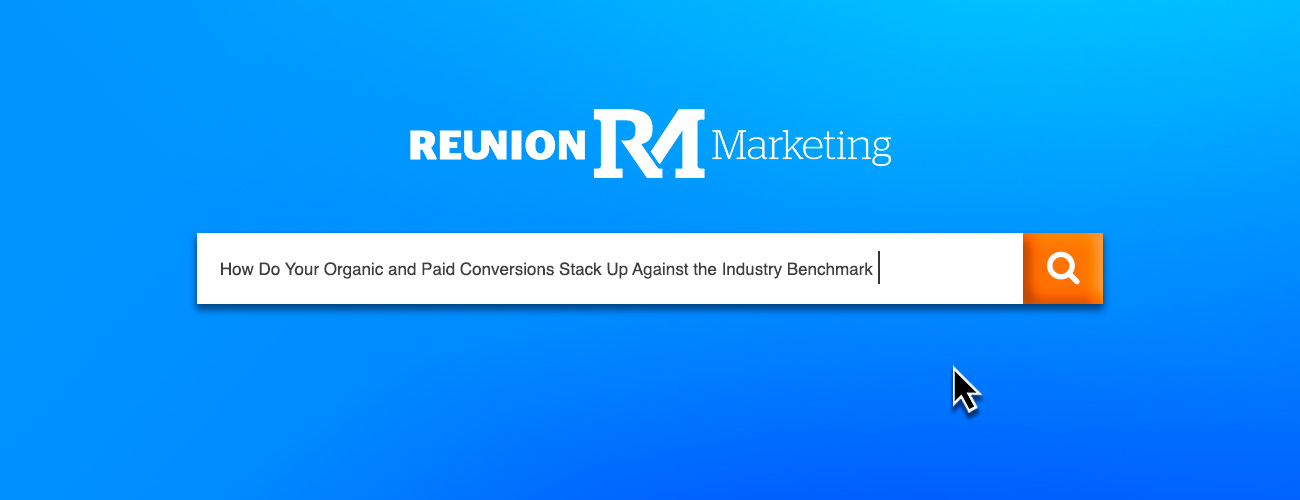Conversions can help you understand a number of important data points. From where consumers click to most effective value propositions or buttons, you can acquire insights about the path to purchase that can guide your digital marketing decisions.
You can know whether to continue optimizing for better conversions or switch to driving more traffic to your site — it’s what we call Opportunity Marketing.
Right now, we’re focused on conversions. They can come through social channels, direct channels, video, display, and much more. That’s why we look at this dataset to make sure our paid and organic channels drive the same high-quality in-market traffic. It also ensures that we use the best information to benchmark across the industry and to anticipate that the conversion rate between the two will be the same — and also know something is wrong with the lower converting channel (paid overspending or lack of organic visibility).
There are a few points to keep in mind about this data set.
First, dealers typically fall across a big spectrum of conversion percentages. If you’re curious about what your metrics are, we have a vast network of dealers. We’d be happy to dive into the details to show how you stack up.
If your paid conversions are coming in at a significantly lower rate than your organic conversions, you are …
- Likely buying keywords that aren’t converting or demonstrating shopping behavior.
- That means they might …
- Be too broad
- Not show intent
- Be outside your optimal geography
- Not land on the right (or optimized) purpose page
- Have misleading ad copy
- And/or your negative keywords might be wrong or not enough in number
- That means they might …
- Inherently wasting your paid search spend.
If your organic conversion seems markedly low, you are …
- Not ranking for the keywords likely working in the paid search strategy.
Should this be the case (low organic conversion), you’ll want to examine your paid keywords that drive conversions and see where you organically rank for them. You may need to double-check your SEO practices for the keywords to gain that first-page and first-position visibility.
Dealership Challenge — Google Yourself
Take a moment to do some local searches. See how you rank. If you’re not, do you currently have a plan to rank for them?
For more perspective, we’re more than happy to help you understand how you’re ranking — and how we can help.
A Rare Case You Should Still Keep in Mind.
While rare, your organic conversions may be lower due to a blog gaining national exposure. This means it will bring in a lot of traffic and authority — and help the site’s authority for in-market searches — but not acquire the conversions needed to accurately measure your current efforts.
Compare Organic and Paid Conversions in Google Analytics
If you’re interested to see how you compare, log into your Google Analytics account:
- Go to Acquisition
- Click on Channels
- Click on Paid Search
- Click on Source
- Look at the row with “google”
- Scan over to Goal Conversion Rate column
- Record your percentage
Now
- Go back to Channels
- Click on Organic Search
- Click on Source
- Look at the row with “google”
- Scan over to Goal Conversion Rate column
- Record your percentage
How Do Your Conversion Metrics Look?
If you’re seeing numbers that are very different, you can contact us for more information or simply go to our free demo page to get your analysis.


